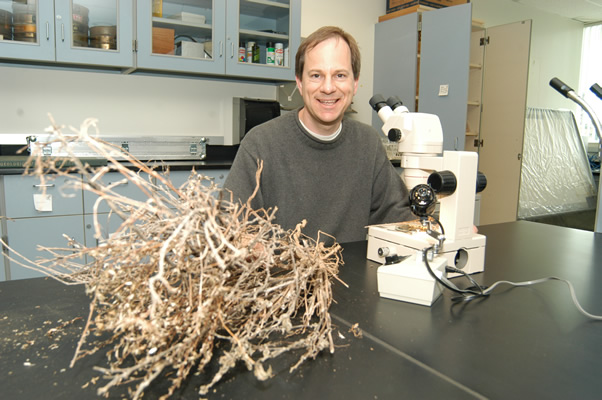Photosynthesis 101
Planting Solutions to Global Warming
February 17, 2009
H. Jochen Schenk, associate professor of biological science, began his session on "Plants As Solutions to Global Warming?" Feb. 5 at the National Teach-In on Global Warming by reminding his audience that a mature redwood tree can contain the equivalent of 800 tons of CO2 — carbon dioxide — or 16 times the amount released into the atmosphere by an average U.S. household. Plants also absorb CO2 through respiration as part of photosynthesis. Trees and plants have frequently been discussed as candidates for carbon sequestration, the removal of carbon and CO2 from the atmosphere and storing it naturally in forests, soil and oceans through physical or biological processes, such as photosynthesis.
By preventing or delaying the emission of carbon to the atmosphere as carbon dioxide, sequestration may help mitigate climate change. Still, as Schenk explained to his students, using trees for carbon sequestration requires water, long periods of time, may have environmental impacts and requires safeguards to be sure that carbon stays in the trees and ecosystems for a long enough time — no forest fires allowed!
Schenk used the remainder of the presentation to emphasize his point that using bioenergy to replace fossil fuels will have a much more immediate impact on carbon emissions. Schenk argued that the solutions to global warming will require a combination of approaches. Carbon sequestration and the use of bioenergy can help decrease dependence upon fossil fuels and lessen global warming, but only if both approaches include a serious commitment as a society to reduce our carbon footprint by planting trees and seriously exploring the use of bioenergy.
(Download Schenk's presentation here)
Related Story:
For questions about Schenk's presentation, contact the professor at jschenk@fullerton.edu


